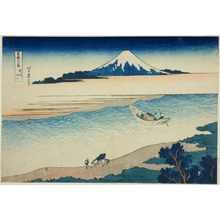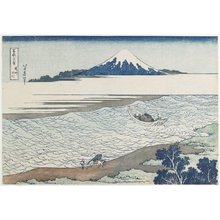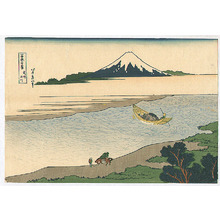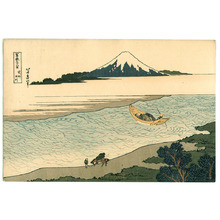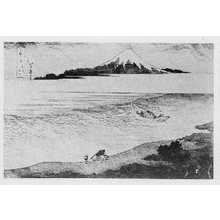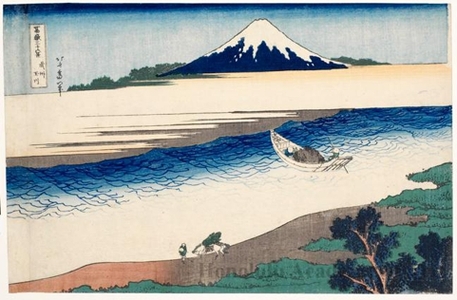葛飾北斎による浮世絵「The Tama River in Musashi Province」
作者:葛飾北斎
作品名:The Tama River in Musashi Province
制作年:c. 1830 - 1834
詳細:詳細情報...
情報源:ホノルル美術館
浮世絵(全 5,476 件)を表示...
説明:
Originating in the Chichibu Mountains, the Tama River flows into Tokyo (Edo) Bay, separating modern-day Tokyo and Kanagawa prefecture. The upper reaches, beyond the city of Öme, form an especially scenic area that for centuries has been mentioned in poetry and depicted in paintings. Today it is no longer the once-tranquil spot for viewing Fuji and the moon. Now it is filled with multistory apartments and streets packed with automobiles. The Tama River is one of two major rivers that flow through or near Tokyo. The Sumida River flows through the wide area called shitamachi that includes Asakusa, Kanda, Nihonbashi, Shiba, Fukagawa, and Honjo. The Tama River flows along the edge of Tokyo, and both empty into Tokyo Bay. During the Edo period, the Tama River, like the Sumida, was close integrated with the lives of the people of Edo; most importantly, it provided people with water through an aqueduct. Hokusai depicts a morning at the Tama River, when heavy pink fog is beginning to burn off to reveal the brimming river. A ferry with cargo and a few passengers crosses the river, while a tiny horseman, leading his horse, stops for a moment and looks up to admire Fuji. Although invisible in a reproduction, the lines expressing the rippling water in the white area are embossed. Hokusai's and Hiroshige's printers developed superb techniques, such as embossing and gradations (bokashi) of color, which helped to create nuances in landscape prints. The key-block was printed in blue. (The Asian Art Museum of San Francisco, HOKUSAI AND HIROSHIGE – Great Japanese Prints from the James A. Michener Collection, Honolulu Academy of Arts: The Asian Art Museum of San Francisco, 1998 Page 62. Cat. 13) ***************** Mount Fuji rises beyond the mist over the Tamagawa (Tama River), one of the two major rivers flowing through the city of Edo. In this quiet morning scene, a ferry crosses the river, while a man leading a packhorse stops to gaze upon the mountain. Here the human and natural worlds are shown in harmony, with the miniscule scale of the people adding to Mount Fuji’s grandeur. This print is a fine example of the high technical standards maintained by top-level publishers such as Eijudö in the nineteenth century. The pattern of waves printed in blue outline over a graded bokashi wash continues as an embossed design over the white section of the river, adding a sense of texture to the print. Bokashi is also used effectively in the sky and the mist. “Hokusai’s Summit: Thirty-six Views of Mount Fuji” (09/24/2009-01/06/2010) ******************************
類似の浮世絵

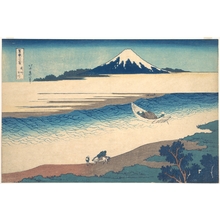
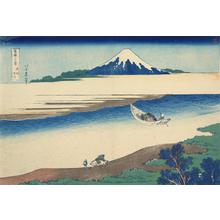
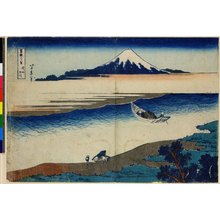
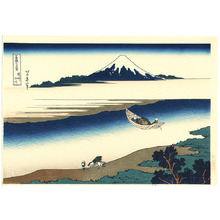
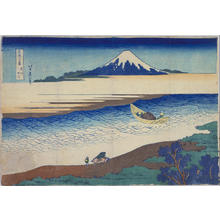
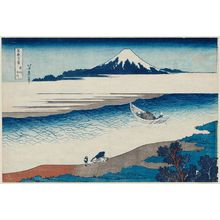
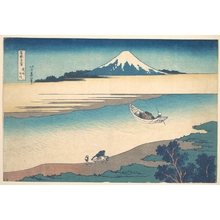


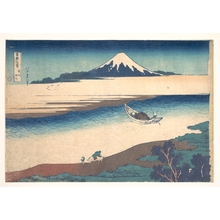
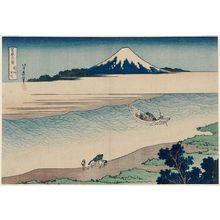
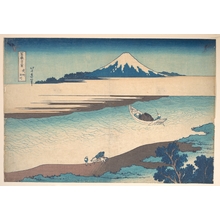
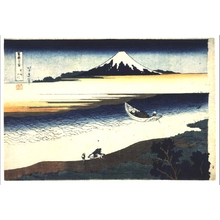
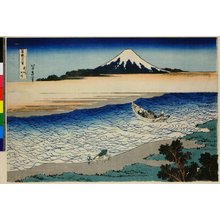

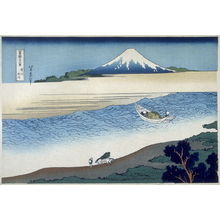

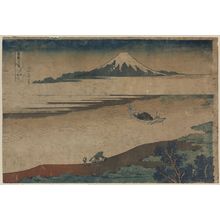
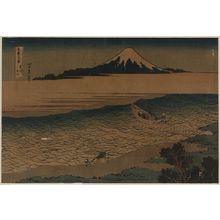
![[Bushū tamagawa] Katsushika Hokusai, 葛飾北斎 (Katsushika Hokusai)による浮世絵「[Bushū tamagawa]」](https://data.ukiyo-e.org/loc/thumbs/02476v.jpg)
